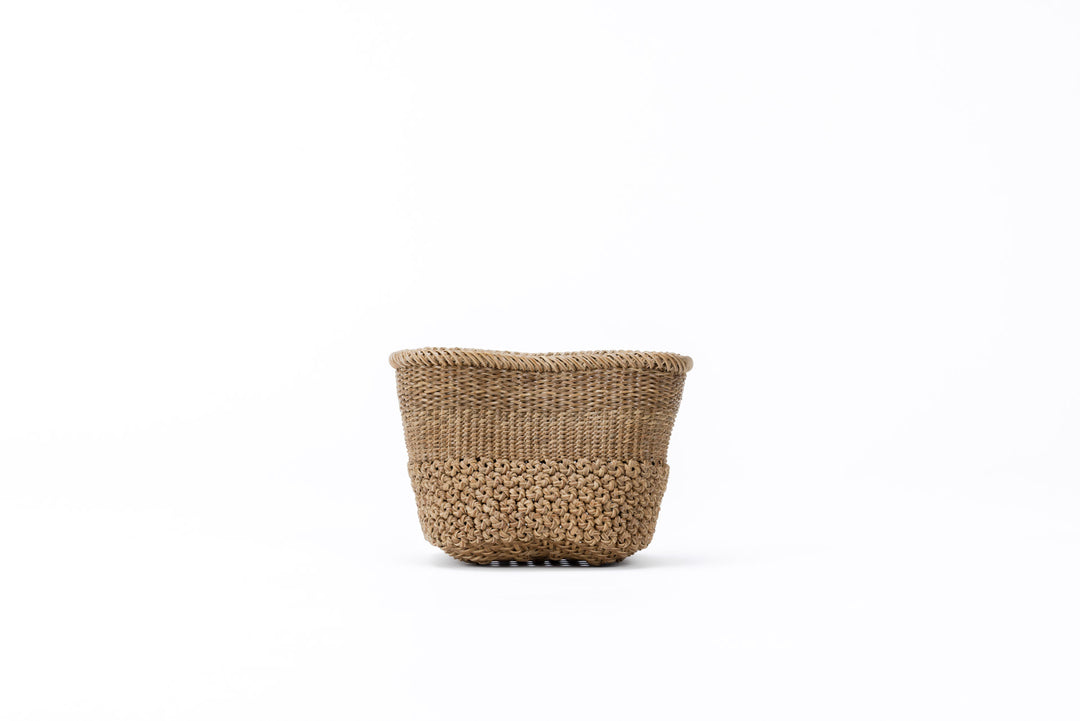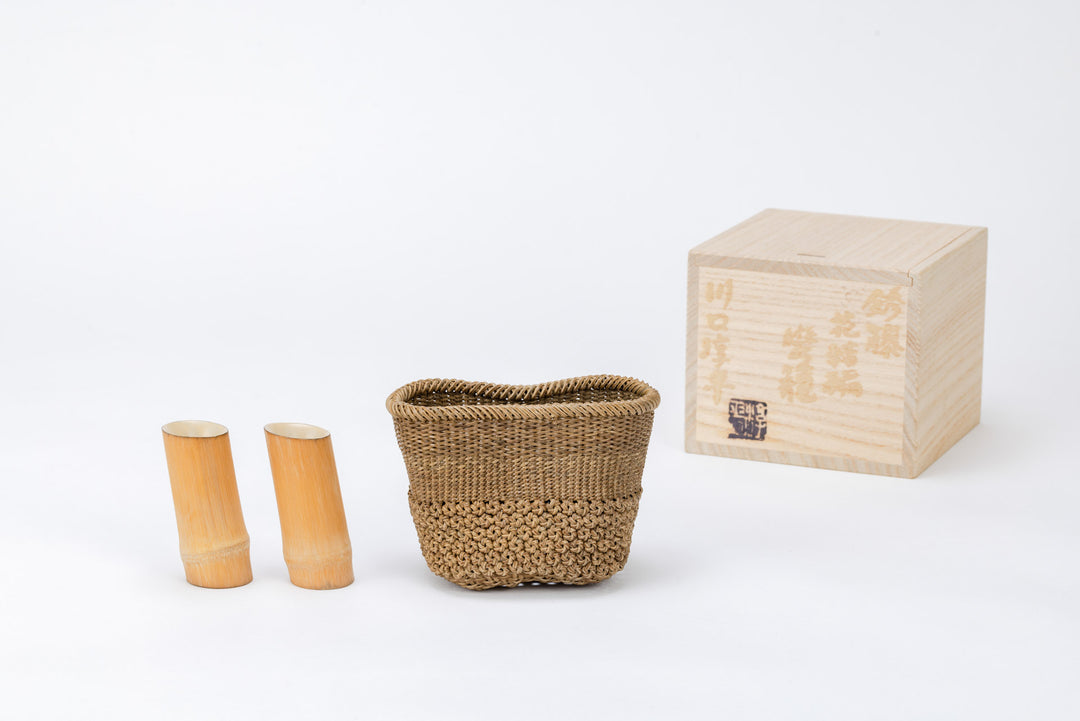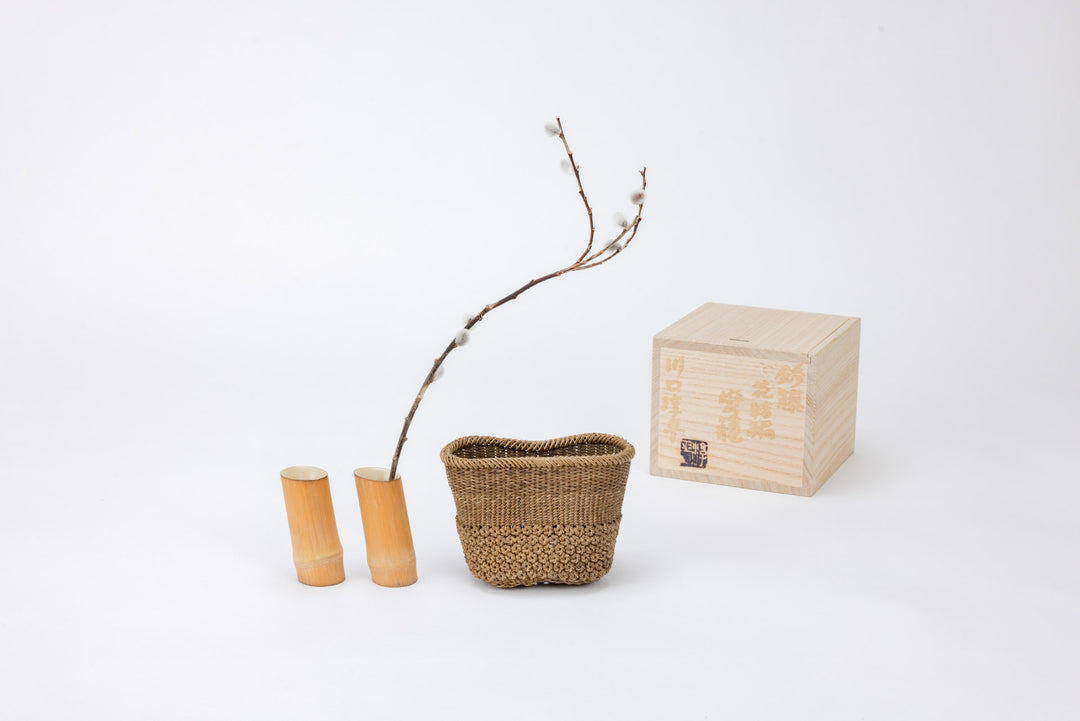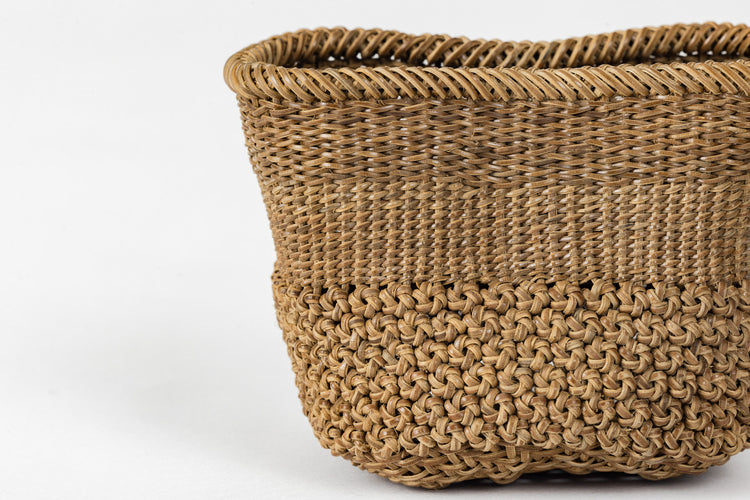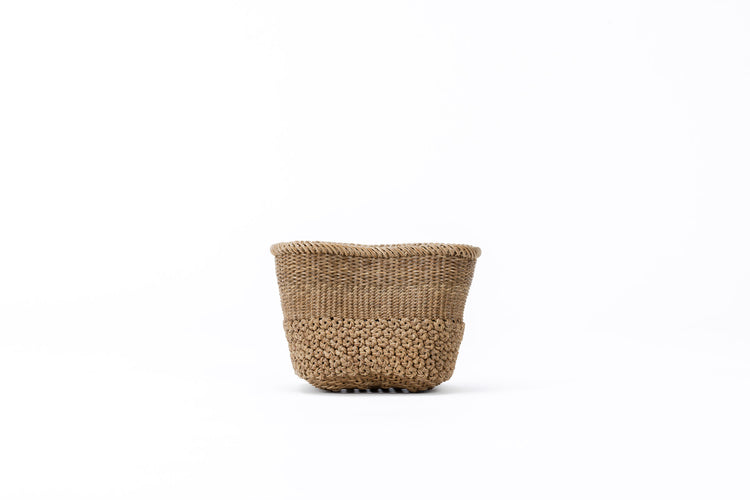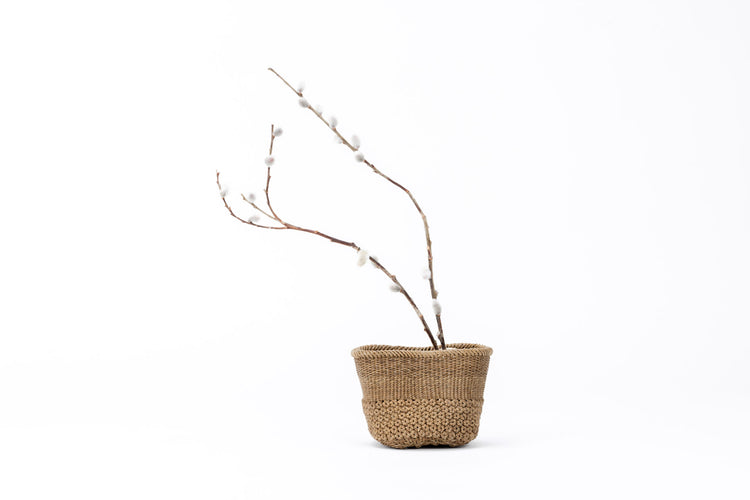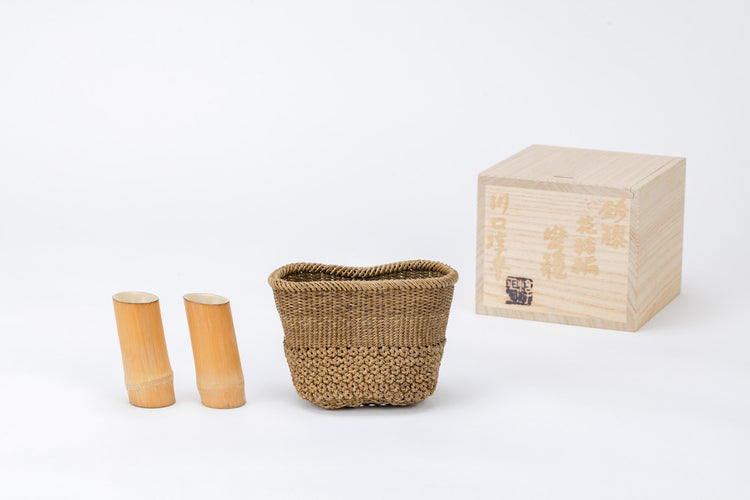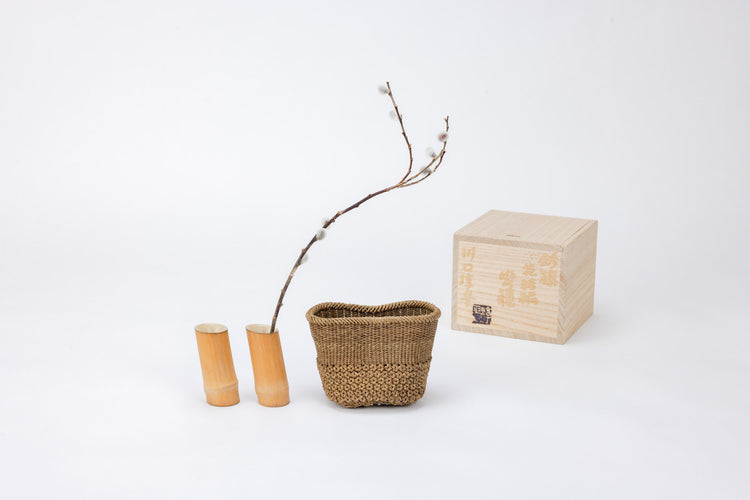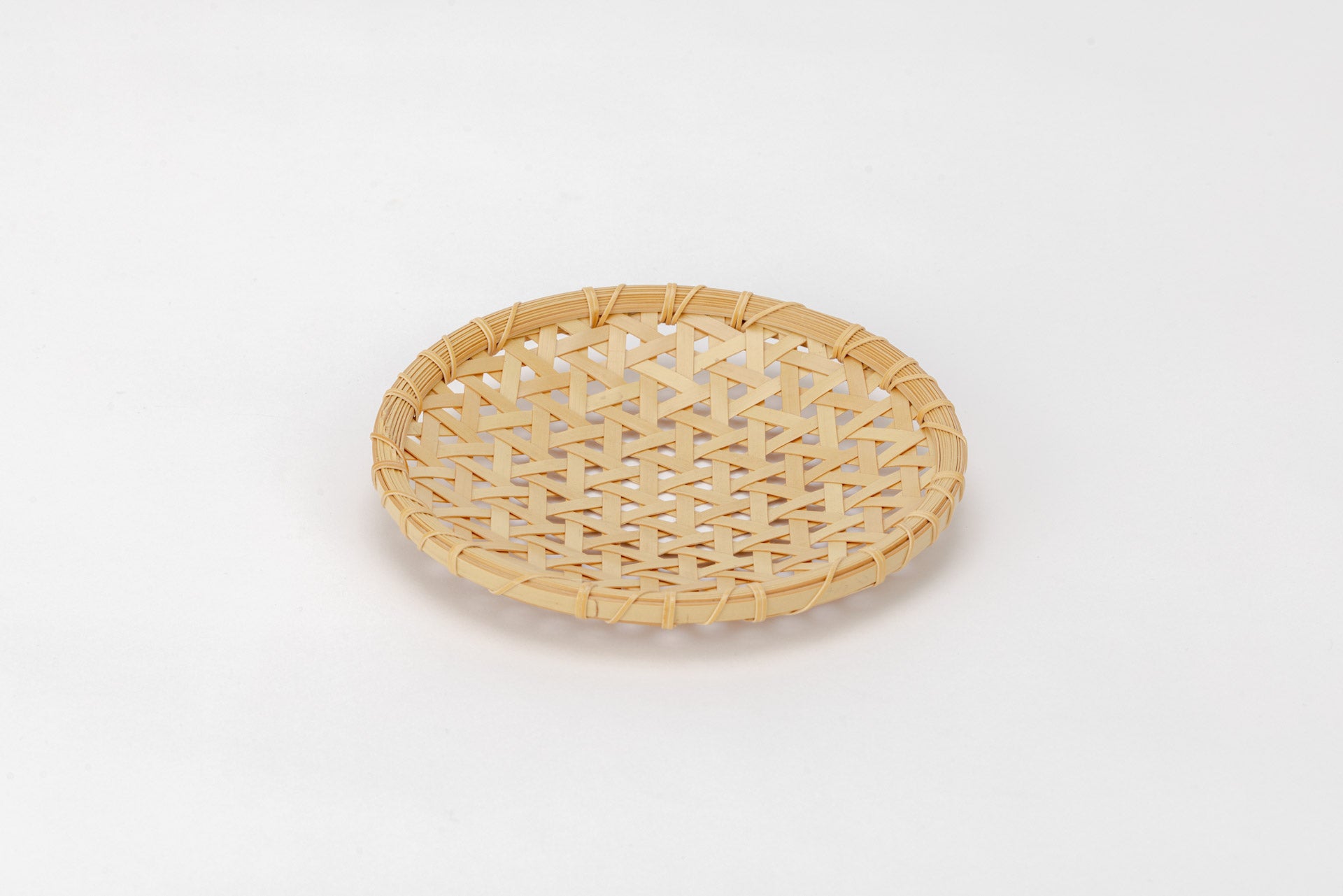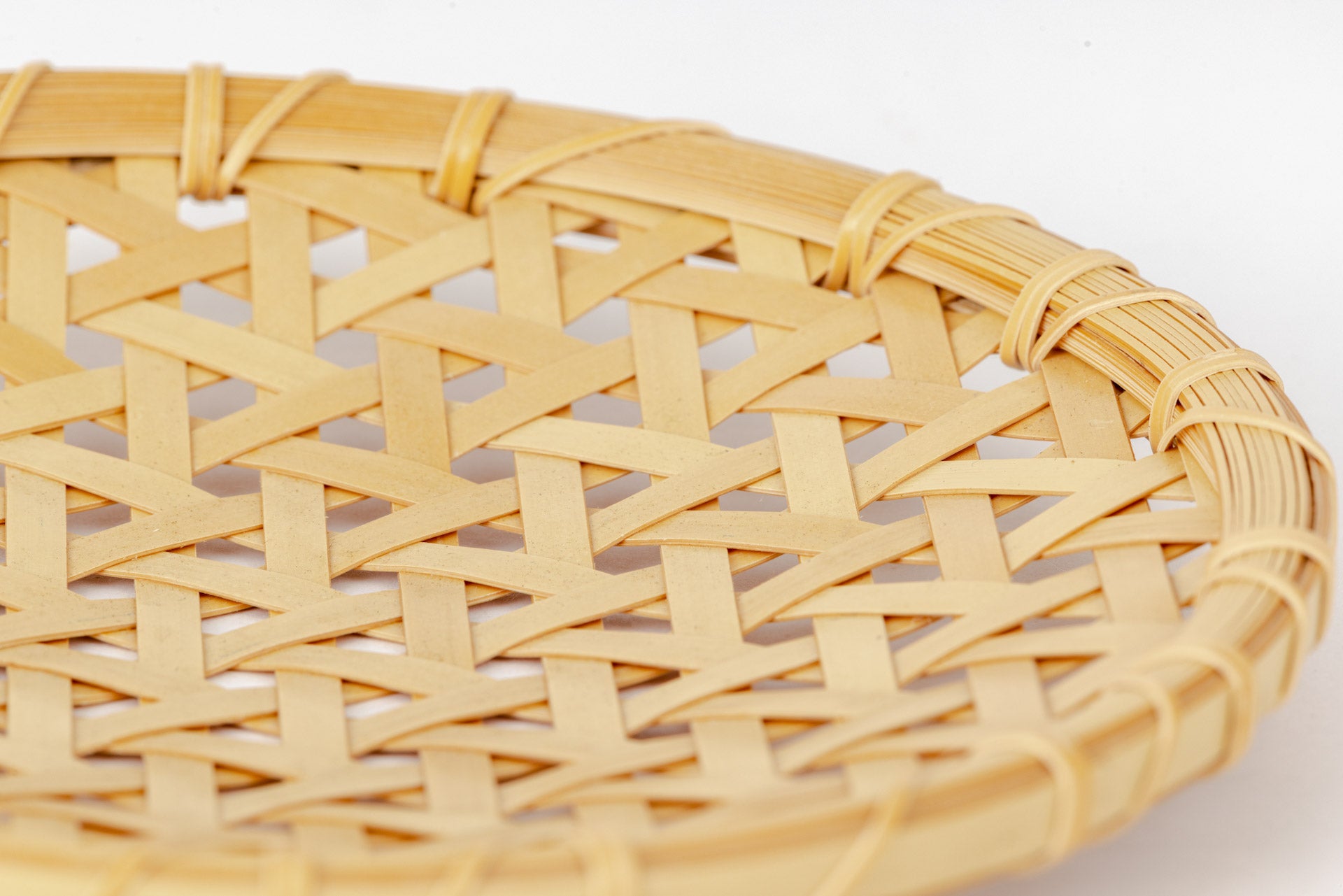Junpei Kawaguchi’s closely-guarded rattan weaving techniques are part of the tradition of isshisoden- techniques kept secret and handed down only to one child in a family of craftspeople. As a skilled weaver, the rattan weaving techniques were entrusted to him by a family of craftspeople so that they would not die out. Kawaguchi continues their treasured hanamusubiami (flower knot weave) with his beautiful bags and baskets.
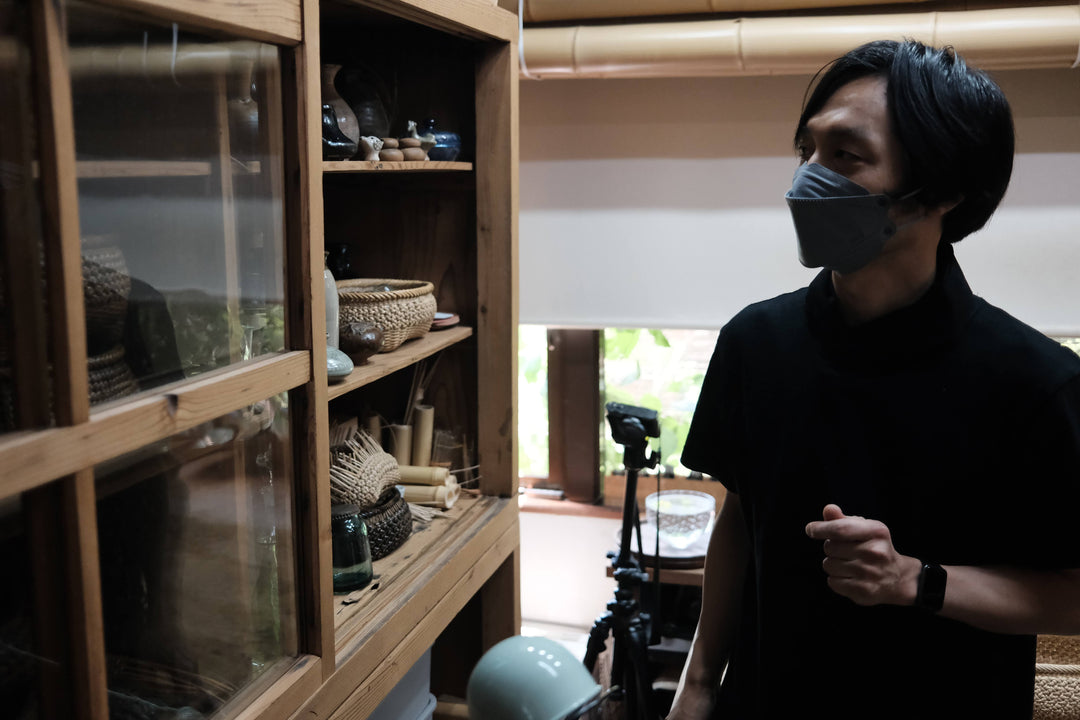
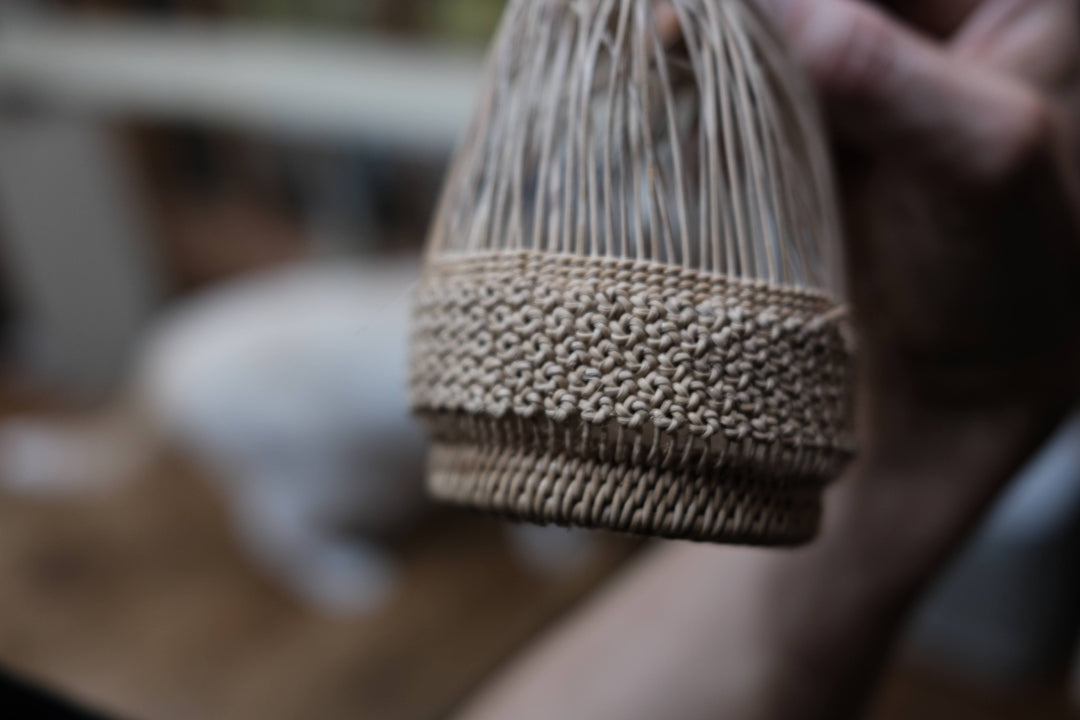
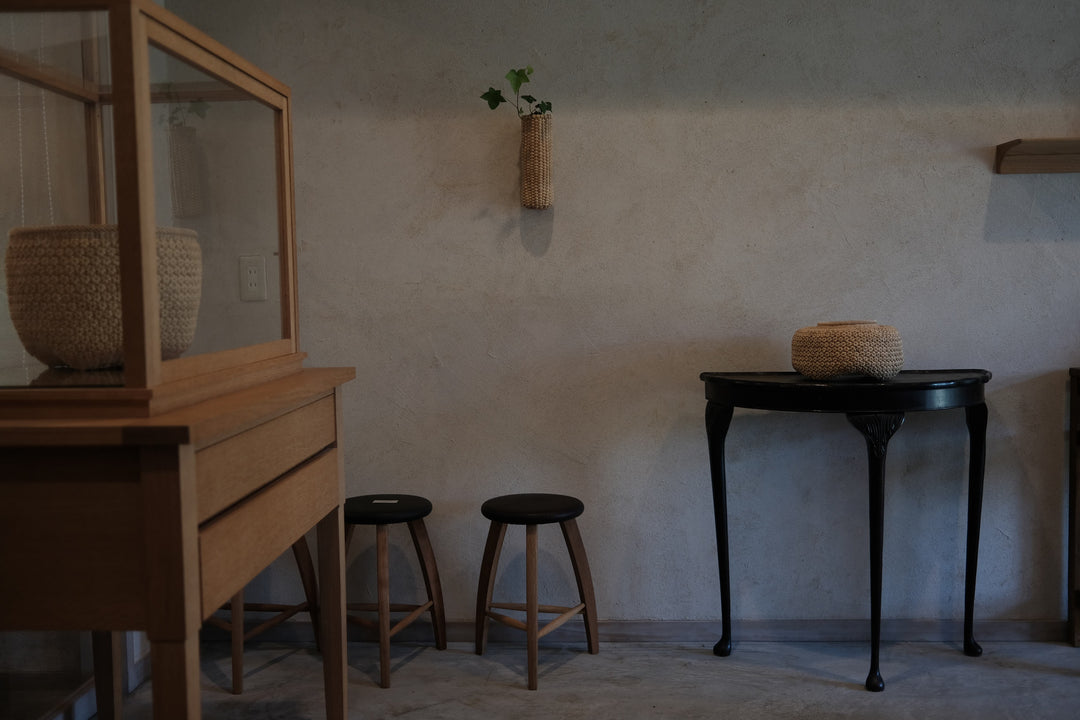
Kawaguchi, a Tottori native, crafts bags from leather, canvas, rattan, and other materials at his studio in Yonago, Tottori Prefecture. In 2006, while researching weaving materials, he encountered Makoto Nagasaki in Matsue, a nearby city in neighboring Shimane Prefecture. It was through Nagasaki, that Kawaguchi was given the privilege of learning the secrets of the Nagasaki family’s weaving techniques, and unexpectedly became the 8th-generation successor of their rattan weaving craft.
Nagasaki was part of a long line of rattan weaving artisans stretching all the way back to the Edo Period, and his family carefully guarded the secrets of the hanamusubiami technique for hundreds of years. Kawaguchi was an admirer of the Nagasaki famiy's beautiful weaving, and asked Nagasaki if he would collaborate, and make the rattan body of a bag for him. However, by that time, Nagasaki had stopped crafing with rattan as it can be quite hard on the body over time.
Because the family’s treasured hanamusubiami technique was a carefully guarded secret, Nagasaki could not simply teach it to Kawaguchi... that is, unless Kawaguchi agreed to inherit the craft as his lifework and become Nagasaki's sole apprentice. As a skilled weaver himself, Kawaguchi was up for the task. He had not only fallen in love with Nagasaki's personality, but also wanted to preserve the beauty of the Nagasaki family's weaving techniques for future generations.
The Nagasaki weaving tradition uses unpeeled rattan, which is easier to process and has a charming aesthetic. Rattan is light and strong, but becomes flexible when soaked in water, and unlike bamboo, it doesn’t split no matter how much it is bent.
The laborious hanamusubiami technique forms a pattern of a six-petalled flowers which holds together very strongly. The baskets and bags made with this traditional technique are timeless, universally appealing, and can be used for more than 100 years. After about a quarter of that, the rattan color becomes tinted, a much anticipated and welcomed change in Japan.
“I hope these baskets will be passed down and used for generations”, says Kawaguchi, an independent artisan with a strong connection to the origins of the craft, who continues to weave its future.
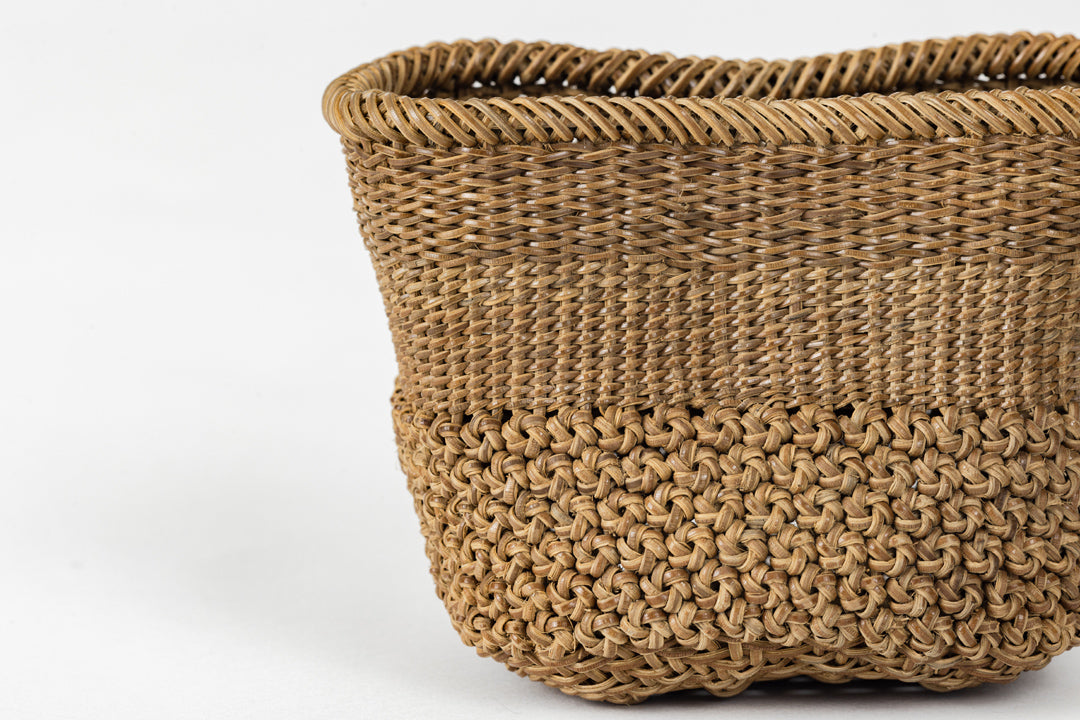
FAQs
Here are some of frequently asked questions. Feel free to talk to us via bottom-right chat icon for further assistance!
Yes, we ship worldwide with DHL. Shipping cost is calculated at the checkout, depending on the products’ weight and the destination.
After your order is confirmed, if the ordered products are in stock, we will ship it in the following business day. Then with DHL, it typically takes 3-5 business days.
We include care & maintenance leaflet with our products. Apart from that, feel free to ask us directly anytime!
When our products arrive in your country, you may be required to pay customs. These are charges payable by the customers, amount depending on the total amount of purchase.





